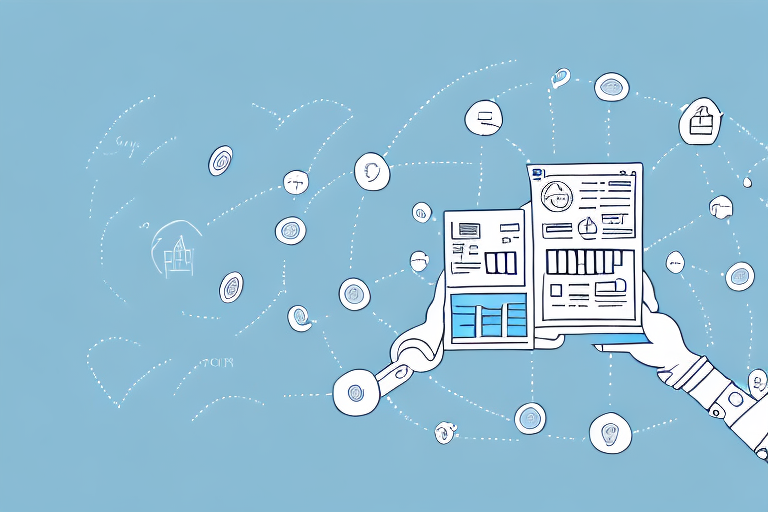Understanding Standard Shipping Rates for UPS
If your business relies heavily on transporting goods, having a reliable shipping partner is crucial. In an increasingly competitive retail industry, fast, efficient, and economical shipping has become a key differentiator. This article delves into the details of standard shipping rates for UPS, providing insights to help your business optimize its shipping strategy.
How UPS Charges for Standard Shipping
Before exploring the specifics of UPS's standard shipping rates, it's essential to understand their pricing structure. UPS calculates shipping rates based on several factors, including package weight, dimensions, destination, and the level of service requested. For standard shipping, UPS offers three primary service levels:
- UPS Ground: Ideal for domestic shipments that are not time-sensitive and can be delivered within 1-5 business days.
- UPS 3 Day Select: A reliable option for shipments that need to be delivered within three business days.
- UPS 2nd Day Air: Best suited for shipments that require delivery within two business days.
Additional Services for Standard Shipping
In addition to the standard shipping options, UPS offers several supplementary services to enhance your shipping experience. These include signature confirmation, insurance, and Saturday delivery. While these services incur additional costs, they provide valuable benefits such as added security and flexibility, ensuring peace of mind for both the shipper and the recipient.
Dimensional Weight Pricing
UPS employs a dimensional weight pricing model, meaning that if a package is lightweight but occupies substantial space, it may be charged based on its dimensions rather than its actual weight. To avoid overpaying for shipping costs, it is crucial to accurately measure and weigh your packages. For more details on UPS's dimensional weight policy, refer to their official guidelines.
Breakdown of UPS Standard Shipping Rates
UPS shipping rates vary based on the selected service level and the shipment's destination. Below is a detailed breakdown of standard shipping rates for UPS:
| Service Level | Package Type | Weight Range | Price Range |
|---|---|---|---|
| UPS Ground | Small Package | 2-3 lbs. | $8.85 - $19.16 |
| Medium Package | 10-11 lbs. | $18.08 - $36.69 | |
| Large Package | 50-51 lbs. | $91.81 - $120.55 | |
| UPS 3 Day Select | Small Package | 2-3 lbs. | $19.73 - $23.32 |
| Medium Package | 10-11 lbs. | $37.54 - $40.92 | |
| Large Package | 50-51 lbs. | $141.98 - $146.18 | |
| UPS 2nd Day Air | Small Package | 2-3 lbs. | $24.36 - $27.02 |
| Medium Package | 10-11 lbs. | $52.73 - $56.74 | |
| Large Package | 50-51 lbs. | $215.19 - $219.42 |
Note: Shipping rates are subject to change. For the most current rates, please visit the UPS official website.
Factors Influencing UPS Shipping Rates
UPS shipping rates are determined by several key factors:
- Package Weight: Heavier packages incur higher shipping costs.
- Package Dimensions: Larger packages, especially those with greater volumetric weight, may be charged more.
- Distance: Shipping over longer distances typically costs more than shorter distances.
- Service Level: Expedited services such as 2nd Day Air or Next Day Air come at a higher cost compared to standard shipping options.
Understanding these factors can help businesses optimize their shipping strategies to minimize costs.
Calculating UPS Standard Shipping Costs
Determining UPS shipping costs is a straightforward process. Utilize the UPS Shipping Calculator available on their website to obtain an estimate for your shipment. By entering the package's weight, dimensions, pick-up location, destination, and desired service level, the calculator will provide an estimated cost. For more personalized assistance, you can also contact UPS customer service to get detailed information tailored to your specific shipping needs.
Tips for Reducing UPS Standard Shipping Costs
While UPS standard shipping is reliable, there are several strategies to lower your shipping expenses. Here are some effective tips:
- Partner with a Third-Party Logistics Provider: Utilizing a third-party logistics provider can offer access to discounted rates and streamlined shipping management.
- Consolidate Shipments: Combining multiple shipments into one larger shipment can lead to cost savings by reducing the number of packages sent.
- Optimize Packaging: Designing packaging to be as efficient as possible can decrease both the dimensions and weight of packages, leading to lower shipping costs.
- Use Economical Delivery Services: Consider services like UPS SurePost, which can offer lower rates for specific shipping needs.
Comparing UPS Standard Shipping Rates with Other Carriers
When evaluating UPS standard shipping rates against other carriers, it's essential to consider the various factors influencing shipping costs. Although UPS may be more costly for certain shipments, they provide a comprehensive suite of services that other carriers might not offer. For example, UPS boasts an extensive network of global shipping partners, making it an excellent choice for international shipments. To determine the most cost-effective carrier for your specific needs, consider comparing shipping rates, service levels, and additional benefits offered by different providers.
Various UPS Standard Shipping Services
UPS provides a variety of standard shipping services tailored to different shipping requirements. The most commonly used services include:
- UPS Ground: Suitable for domestic shipments that are not time-sensitive, with delivery typically within 1-5 business days.
- UPS 3 Day Select: An excellent choice for shipments requiring delivery within three business days.
- UPS 2nd Day Air: Best for shipments that need to be delivered within two business days.
- UPS Next Day Air: Ideal for time-sensitive shipments that must arrive by the next business day.
UPS International Standard Shipping Rates
International shipping with UPS tends to be more costly than domestic shipping, but UPS offers various services that can help manage and reduce these expenses. Key factors affecting international shipping rates include the destination country, package weight and dimensions, as well as customs duties and taxes. UPS provides a range of international shipping services, including UPS Worldwide Express, UPS Worldwide Expedited, and UPS Worldwide Saver.
Expedited Shipping vs. Standard Shipping: Which Should You Choose?
Choosing between expedited and standard shipping depends on your specific business requirements. Expedited shipping is ideal for time-sensitive deliveries that need to arrive by a specific date, ensuring customer satisfaction and timely receipt of goods. On the other hand, standard shipping is suitable for non-urgent deliveries that can arrive within a few days, offering cost savings. While expedited shipping provides faster delivery, it comes at a higher cost. Therefore, it's essential to balance your delivery speed needs with your budget constraints when making this decision.
Understanding UPS Shipping Zones
UPS utilizes a zoning system to determine standard shipping rates, assigning each package to one of eight zones based on the shipment's origin and destination. These zones are calculated based on the distance between the origin and destination ZIP codes—the greater the distance, the higher the shipping rate. Understanding UPS's zoning system can help you estimate shipping costs more accurately and plan your logistics accordingly.
Managing and Tracking UPS Standard Shipments
Effective management and tracking of your UPS standard shipments are essential for timely and successful deliveries. UPS provides a suite of tools and resources to help you oversee your shipments, including:
- UPS My Choice: Customize your delivery options and receive real-time tracking updates, offering greater control over your shipments.
- UPS Tracking: Monitor the delivery status of your packages with detailed tracking information, ensuring you stay informed at every step.
Using these tools can enhance your shipping efficiency and provide peace of mind by keeping you informed about your shipment's progress.
Avoiding Common UPS Standard Shipping Mistakes
When utilizing UPS standard shipping, businesses may encounter common mistakes that can delay or damage deliveries. These include:
- Insufficient Packaging: Inadequate packaging can lead to damage during transit.
- Inaccurate or Incomplete Shipping Labels: Errors in labels can cause misrouting or delivery failures.
- Incorrect Package Dimensions and Weight: Misreporting can result in higher shipping costs or delinquencies.
- Non-compliance with Shipping Restrictions and Regulations: Violating guidelines can lead to shipment holds or fines.
To prevent these issues, ensure adherence to UPS's packaging and labeling guidelines, and double-check the package's weight and dimensions against the shipping label before dispatching your shipment.
Advantages of Using a Third-Party Logistics Provider for UPS Shipments
Collaborating with a third-party logistics (3PL) provider can yield substantial benefits for businesses utilizing UPS for shipping. Key advantages include:
- Expanded Shipping Services: Access a broader range of shipping options and specialized services tailored to your business needs.
- Cost Savings: Benefit from reduced shipping costs through negotiated rates and bulk shipping discounts.
- Enhanced Shipping Efficiency: Improve logistics management and streamline your shipping processes with expert support.
- Comprehensive Shipping Analytics: Gain better visibility into shipping performance metrics and analytics to make informed logistical decisions.
Future Trends in UPS Standard Shipping and Pricing
UPS is poised to continue its growth in standard shipping by investing in innovative technologies and services aimed at enhancing the shipping experience for both businesses and consumers. Anticipated trends include:
- Contactless Delivery: Increasing adoption of contactless delivery options to ensure safety and convenience.
- Artificial Intelligence and Machine Learning: Integrating AI and machine learning into logistics management to optimize routing and improve delivery efficiency.
- Alternative Fuels and Delivery Methods: Expanding the use of alternative energy sources and innovative delivery methods to promote sustainability.
- Enhanced E-commerce Partnerships: Streamlining order processing and fulfillment through collaborations with e-commerce giants like Amazon.
Overall, comprehending UPS's standard shipping rates is essential for businesses aiming to minimize shipping costs and enhance their logistics management. By implementing the strategies and guidelines discussed in this article, businesses can make informed decisions about their shipping needs and collaborate with UPS to ensure the timely, efficient, and cost-effective delivery of their packages.




















